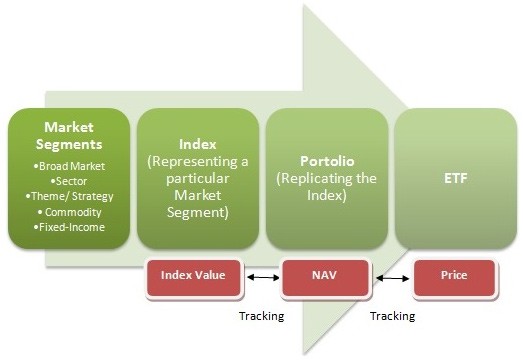Understanding Net Asset Value
Post on: 1 Июнь, 2015 No Comment

When selling a car, people don’t accept the first price a used-car salesman quotes as its actual value. Instead, most attempt to arrive at a more independent assessment of actual value.
That can be tough with a used car. Fortunately, it’s very easy with ETFs—it’s calculated and disseminated to the public daily. This “value” is termed net asset value (NAV), and it’s one of the most important data points for ETFs and mutual funds.
A fund’s NAV is the sum of all its assets (the value of its holdings in cash, shares, bonds, financial derivatives and other securities) less any liabilities, all divided by the number of shares outstanding.
It’s basically an indication of the fair value of a single share of the fund. It provides investors a reference point around which they can gauge any offers to buy or sell shares of the fund.
If you own 100 shares of an ETF whose NAV is $50, and someone offers $55, you have a solid basis from which to judge their offer.
In this unlikely situation, where someone wants to pay you a 10 percent premium over actual value, you would probably say: “Yes, please!” In reality, though, most ETFs trade much closer to their NAV, thanks to the creation/redemption mechanism. (See “Creations And Redemptions” for more information).
At this point, it’s clear that NAV is an important and useful metric for investors, but like most things in life, there are exceptions to its utility. So, when is NAV inadequate? How does NAV become “stale”?
To answer these questions, we need a brief overview of how NAV is calculated.
How Is NAV Calculated?
To establish a daily NAV, the fund chooses a time, every day, at which to value its assets. For a traditional equity ETF, the NAV is calculated (or “struck”) once all the markets being tracked by the ETF’s index have closed.
For an ETF tracking U.S. equities, for example, the NAV can be calculated soon after the U.S. market’s 4:00 p.m. ET close. At that time, the closing price of each of the fund’s assets is recorded as an indication of its current value. All these prices are then aggregated to arrive at the value of the fund’s entire portfolio.
NAV’s Shortcomings
Challenges arise when an ETF holds securities trading in a different time zone, because NAV is based on the last price when the exchange closes.
For example, an ETF that trades on the NYSE but tracks the FTSE 100 will hold securities trading on the London Stock Exchange. The London Stock Exchange closes at 11:30 a.m. ET—at which point the fund’s NAV is “struck.” However, for another 4 /12 hours, the ETF will still be trading on the NYSE.
A lot can happen in 4 1/2 hours that could affect the value of the ETF. However, NAV will remain stationary (because the LSE is closed), and only the ETF will reflect any changes in value over the 4 1/2 hours.
In this case, value has changed, but NAV has not, and as a result, NAV is “stale,” and differences between the ETF’s trading price and its NAV can appear. (See “Premiums and Discounts” for more.)

Using closing exchange prices is all well and good for equity securities, but what about bonds?
For bond ETFs, bid prices (the price at which the ETF could sell its bonds) are often used, meaning that the NAV may seem lower than a valuation based on mid-point or offer prices. (See more in our article about premiums and discounts.)
Distinct from an ETF’s official, once-a-day NAV is the intraday or indicative NAV (often called “iNAV”). This is a measure of an ETF’s intraday value, with the prices used in the NAV calculation updated for real-time market movements, and published several times a minute.
iNAVs are often calculated by third-party commercial data vendors and disseminated by Europe’s stock exchanges. Many stockbrokers offer their clients access to real-time iNAVs on ETFs, which can then be compared with ETF prices.
iNAVs can be a useful measure of value when you’re looking to trade an ETF, although they’re not foolproof and, similarly to NAVs, may not reflect true value if prices become stale.
And One Final Note …
ETF NAVs and iNAVs are always calculated in the base (accounting) currency of the fund. If the ETF you’re looking at has share classes in different currencies, you may need to make a currency conversion to determine if a fund is trading at a premium or discount.
What’s Next? Understanding Premiums and Discounts
Other Articles Of Interest














